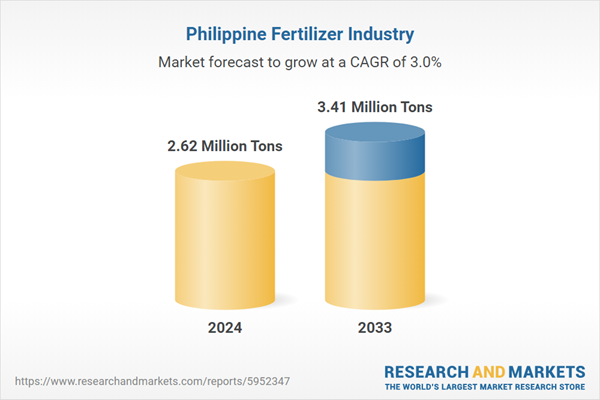The Philippines has limited fertilizer production capacity, so it needs to import large amounts of fertilizer every year. According to the publisher's analysis, the Philippines' annual fertilizer imports have exceeded 2 million tons in recent years. The Philippines mainly imports fertilizers from China, Indonesia, Malaysia and other countries.
But the Philippines also exports fertilizers. The main types of chemical fertilizers exported by the Philippines are urea, ammonium sulfate, diamine phosphate, potassium fertilizer and compound fertilizer. Cambodia, Vietnam, Malaysia, Zambia, Bulgaria, etc. are the main export markets for fertilizers in the Philippines.
According to the publisher's analysis, although COVID -19 has had a certain adverse impact on the Philippine fertilizer industry in 2020-2021, in 2022-2023, the Philippine fertilizer industry has shown a recovery trend.
Although the demand for fertilizers in the Philippines in 2020 was adversely affected by extreme weather conditions, in general, the operating conditions of enterprises are good, and the operating performance of leading enterprises has increased significantly.
According to the publisher’s analysis, the positive outlook for agriculture is a factor driving the growth of fertilizer consumption in the Philippines. The Philippines is one of the agricultural systems most vulnerable to monsoons and other extreme weather events, and these events are expected to create more uncertainty as climate change impacts the country.
Overall, with the growth of the Philippine population and economic development, the demand for chemical fertilizers in the Philippine agriculture and planting industry will continue to rise. The Philippines' fertilizer imports are expected to continue to grow from 2024 to 2033. The publisher predicts that by 2033, the Philippines' fertilizer imports will reach 3.39 million tons, with a compound annual growth rate of 3.0 % from 2024 to 2033.
For foreign-funded enterprises, the Philippine fertilizer industry is an area worthy of investment in the next few years.
Topics covered:
- Philippine Fertilizer Industry Overview
- Economic environment and policy environment for fertilizers in the Philippines
- Philippine fertilizer market size from 2019 to 2023
- Analysis of major Philippine fertilizer manufacturers
- Key Drivers and Market Opportunities of the Philippine Fertilizer Industry during the 2024-2033 forecast period?
- What is the expected revenue of the Philippine fertilizer market during the forecast period of 2024-2033?
- What strategies are adopted by the key players in the market to increase their market share in the industry?
- Which segment of the Philippines Fertilizer Market is expected to dominate the market in 2033?
- Philippine fertilizer market forecast 2024-2033
- What are the major headwinds facing the Philippine fertilizer industry?
Table of Contents
Companies Mentioned
- Universal Harvester Incorporated.
- UHI
- Hans
- Sagrex Corporation
- K&R Chemical Industries Inc.
- Philippine Phosphate Fertilizer Corporation
- PHILPHOS
- Atlas Fertilizer Corporation
- Maxiplex International Philippines Corporation
- Planters Products
- AA Bio Tekh Enterprises Co.
- Filipinas Agri-Planters Supply Inc.
- Agrichem Corporation
- Manchem Marketing Inc.
Methodology
Background research defines the range of products and industries, which proposes the key points of the research. Proper classification will help clients understand the industry and products in the report.
Secondhand material research is a necessary way to push the project into fast progress. The analyst always chooses the data source carefully. Most secondhand data they quote is sourced from an authority in a specific industry or public data source from governments, industrial associations, etc. For some new or niche fields, they also "double-check" data sources and logics before they show them to clients.
Primary research is the key to solve questions, which largely influence the research outputs. The analyst may use methods like mathematics, logical reasoning, scenario thinking, to confirm key data and make the data credible.
The data model is an important analysis method. Calculating through data models with different factors weights can guarantee the outputs objective.
The analyst optimizes the following methods and steps in executing research projects and also forms many special information gathering and processing methods.
1. Analyze the life cycle of the industry to understand the development phase and space.
2. Grasp the key indexes evaluating the market to position clients in the market and formulate development plans
3. Economic, political, social and cultural factors
4. Competitors like a mirror that reflects the overall market and also market differences.
5. Inside and outside the industry, upstream and downstream of the industry chain, show inner competitions
6. Proper estimation of the future is good guidance for strategic planning.

LOADING...
Table Information
| Report Attribute | Details |
|---|---|
| No. of Pages | 60 |
| Published | April 2024 |
| Forecast Period | 2024 - 2033 |
| Estimated Market Value in 2024 | 2.62 Million Tons |
| Forecasted Market Value by 2033 | 3.41 Million Tons |
| Compound Annual Growth Rate | 3.0% |
| Regions Covered | Philippines |
| No. of Companies Mentioned | 14 |









